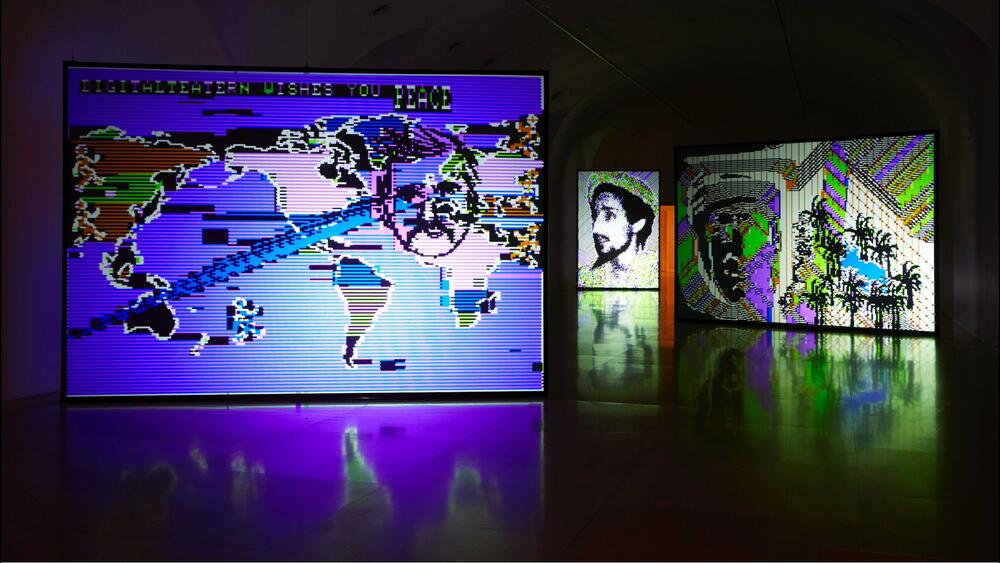CHARLOTTE JOHANNESSON: FEMINIST TEXTILE AND DIGITAL ART
The Reina Sofía National Museum Center of Arts (MNRS) is showing the first solo exhibition dedicated to the Swedish artist Charlotte Johannesson (Malmö, 1943). Curated by Lars Bang Larssen and Mats Sjernstedt, Take Me to Another World brings together around a hundred textile artworks, prints, tapestries, and digital looms.
Considered one of the pioneers in the production of images interweaving craftsmanship with digital technology, Johannesson is a key figure in understanding contemporary artistic currents in which digital tools are composing entirely new imaginaries.

Charlotte Johannesson's career can be interpreted as a constant response to convention. In her native Malmö, the artist studied traditional crafts, but by 1966, at the age of 23, she founded the Cannabis project with her husband Sture Johannesson. This operated as a workshop/gallery in which the couple developed textiles with cannabis fibres. This early phase of Charlotte Johannesson's work is characterised by the composition of vertical looms inspired mainly by the weaver Hannah Ryggen.
But a few years later, in the 1970s, Johannesson became interested in the possibilities that computers offered in relation to design. It was at the end of this decade that the artist bought a Macintosh computer after a trip to California and introduced this technology into her process of artistic creation. All this in a self-taught way and without design programmes developed for the task. Because of this, she founded Digitalteatern, a workshop oriented towards experimentation and the creation of images using digital technology. Like Cannabis, the new workshop was founded in collaboration with her husband. As far as is known, Sture was the technician, Charlotte the artist.
The journey outlined by Larssen and Sjernstedt in Take Me to Another World aims not only to illustrate this chronological journey through Johannesson's artwork but also, and above all, to highlight the artist's freedom from traditional textile art in general. Interested in developing a discourse of protest, the Swedish artist appropriated the discipline, endowing it with artistic and political force; in other words, shifting textile art from its conventional decorative and domestic condition to a position of critical expression and denunciation. Johannesson also used the looms as an expressive medium to point out the machismo in the configuration of the dominant artistic canon: here the implementation of textiles assumes even greater relevance, since up to that time they had always been associated with domestic and female labour.
Among the works that can be seen at the MNRS, it is worth mentioning Chile eko i skallen (Chile echoes in the coconut), 1973; No Choice amongst Stinking Fish (1973); and I'm No Angel (1974), all works in which her political perspective and feminist critique are lucidly manifested. And on the other hand, the works Faces of the 1980s; Me and my computer (1981-1986); and Human med satellit (1981-1985), in which computer and digital design begin to play a leading role in her artistic production.
Charlotte Johannesson.Llévame a otro mundo // Take Me to Another World from Museo Reina Sofía on Vimeo.




